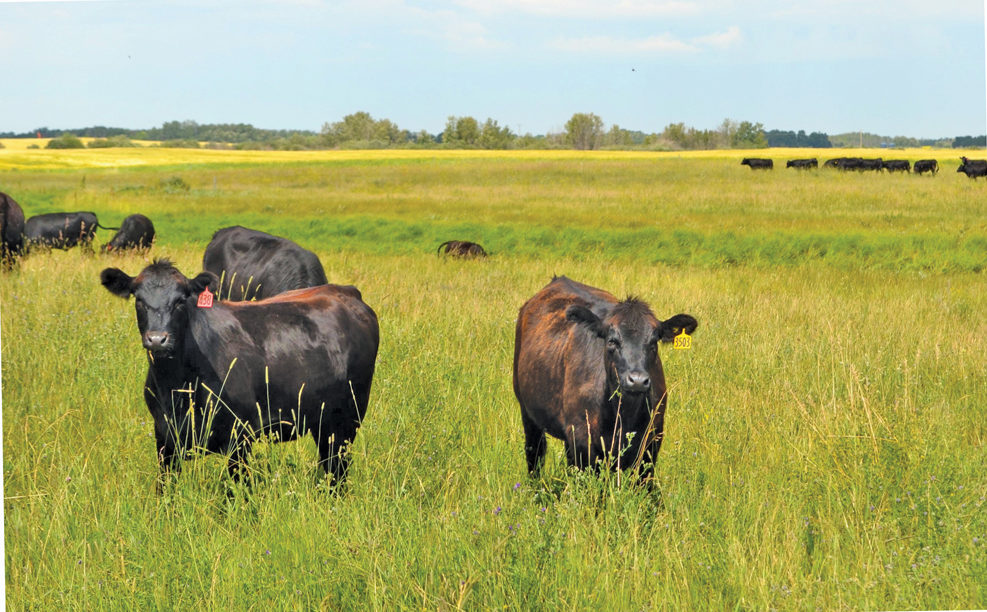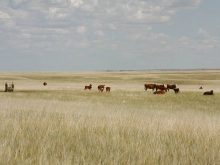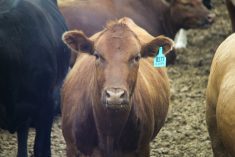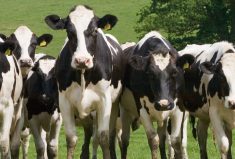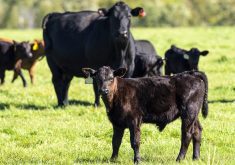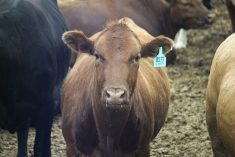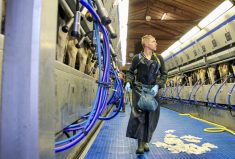Grasslands punch above their weight when it comes to carbon sequestration.
That’s the conclusion of a researcher who started his career on an Alberta-wide study of how land use affects that province’s carbon pool.
Daniel Hewins, now an assistant professor at Rhode Island College in Providence, R.I., says grasslands can and do store an enormous amount of soil carbon.

“Temperate grasslands make up about eight per cent of the earth’s surface but they hold a lot of carbon, an estimated 300 gigatons is what we have seen,” Hewins said at the recent annual meeting of the Canadian Forage and Grasslands Association in Winnipeg.
“About nine gigatons or three per cent of that is above ground in plant material and about 295 gigatons is in the soil. So, it is really important to value that soil and value that soil carbon.”
The research study involved 144 grassland enclosures, including both grazed and ungrazed sites.
“Many of the ungrazed sites have not been grazed by livestock for more than 60 years so this really gave us the opportunity to sample native prairie in both grazed and ungrazed communities in a paired setting,” Hewins said.
Read Also

Pig transport stress costs pork sector
Popular livestock trailer designs also increase pig stress during transportation, hitting at meat quality, animal welfare and farm profit, Agriculture and Agri-Food Canada researcher says
In fact Hewins stressed that this sort of work is unprecedented in its scale and allows researchers like him a new window into what happens below our feet.
“This is really a one-of-a-kind comprehensive study looking at how grazing affects carbon stores and grassland biodiversity across up to six different agro climatic zones,” he said.
“We are really aiming, with our research, to get a provincial-scale assessment of how land use and livestock grazing affect plant communities and how that subsequently affects carbon storage. And then, how can we assign some monetary value to that or some incentive for ranchers and those of you who are out there doing the work to protect these ecological goods and services.”
The study, his post-doctoral fellow research, was conducted at the Rangeland Research Institute in the department of agriculture, food and nutritional science at the University of Alberta in Edmonton. It ran from 2013 to 2016 and measured the effects of livestock grazing on the carbon nutrient cycling in the grasslands of central and southern Alberta.
Differences
Not all grasslands are the same and the study revealed some profound differences based on management and environment.
In wetter environments there is an increase in introduced species and grazing them promotes the biodiversity of perennial native grasses.
“With grazing in some of these wetter environments we saw an increase in diversity, so the number of species in a community,” he said. “When we have moisture available to plants, we were seeing an increase in diversity as a response to grazing, so grazing is actually stimulating biodiversity in these systems.”
The study also identified an increase in productivity and increased biodiversity under grazing.
“All of these things are pointing to the fact that grazing in these grassland systems is essentially good for these ecological goods and services,” Hewins said. “Grazing not only seems to promote biodiversity of our perennial native grasses, it also seems to limit shrub encroachment into our grassland environment. This is particularly important in places like the Rocky Mountain foothill region, or the Rocky Mountain forest reserve where grazing land is already quite limited due to the nature of the ecosystem.”
He adds that grazing also stimulated root production, which increases plant biomass and ultimately leads to the formation of soil carbon. So in fact, grazing can provide the opportunity to enhance and maintain soil carbon pools.
Incentives
Hewins, along with many others within the forage sector, believe that incentives should be put in place to encourage producers to avoid converting grasslands and to manage the land in a way that is sustainable.
“Although there is no willingness to pay for what is stored in the grasslands, there should be a point made that we are protecting what is there by managing the land effectively or sustainably in that way,” Hewins said. “If grasslands are converted it is also difficult to get that carbon back, so when we seed back to native, there have been some studies done and it looks like it takes more than 50 years to get that carbon pool back up to where it really was before conversion. Ultimately, there needs to be a willingness to pay to protect some of this carbon because not only is it stored and protected in grasslands, it is also very, very difficult to get back into the soil.”
In order to achieve any progress towards incentives, Hewins says the industry needs data to support what is truly happening on the landscape.
“We are working at generating a lot of this data to say, look, we are standing on a gold mine here and we need to incentivize and value this carbon stock that is in our native grasslands and our prairies,” Hewins said. “Essentially there needs to be voices that are echoing these messages and these messages need to be supported by data. They cannot stand on anecdotes alone. Native grasslands that many of you manage are providing abundant goods and services not only for your communities but also for the broader society. Services like carbon storage, improved soil health, water filtration, greenhouse gas uptake, and these are all really important for policy.”
Hewins adds that research on land use and grazing systems continues at the University of Alberta with the ultimate goal of assigning a provincial-scale assessment of carbon in response to grazing.






